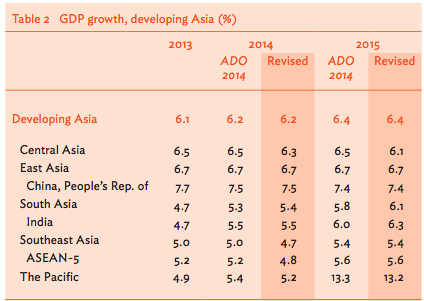Much has been made of China’s recent slowdown in economic growth, but the chief economist of the Asian Development Bank wants to remind Canadian companies that the country is forecasted to reach growth rates upwards of 7% in 2014 and 2015.
That compares with the modest 1.5% growth in 2014, and 2.2% growth in 2015, that ADB is predicting for the major industrial economies.
“Asia’s growth rate is projected to be over 6% for this year and next year, making developing Asia the fastest-growing region in the world,” Shang-Jin Wei told Business in Vancouver in an interview on October 6.
In its latest economic forecast, the Asian Development Bank forecasts that India will grow 5.5% in 2014 and 6.1% in 2015. The bank has raised its growth targets for both India and Indonesia, in part because of optimism that new governments in those countries will be able to effectively deliver reforms.
However, the bank has downgraded its forecasts for Thailand for 2014 because of political instability in that country.
On October 6, government officials from Thailand were in Vancouver to discuss Thailand's need for more energy and opportunities for Canadian investment.
ADB is projecting a return to stability in Thailand in 2015, Wei said.
Wei will be now be focusing on China’s five-year plan, which the Chinese government is working on now and will likely complete within the next six months.
Canadian firms looking to trade with China need to be aware of that country’s shifting economy from a low-wage manufacturer to a higher-wage, more highly educated workforce, Wei said. That means that high-quality items Canadian importers may once have sourced from a country like Korea may now come from China.
China’s domestic consumer market is also growing, along with demand for higher-quality food and other products.
“In Supermarkets in China, you’re increasingly seeing food labels or systems that allow consumers to trace who are the producers, where are the producers and so on – those things are having increasing demand,” Wei said.
Concern over pollution levels and China’s problems with water quality could also provide opportunities for Canadian companies who specialize in clean technology or water testing.
@jenstden




